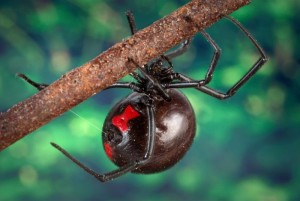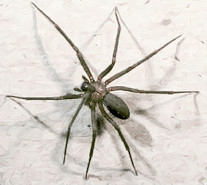Everyone has spiders around them. The arachnids are nearly everywhere on the planet and pretty hard to avoid. Whether you live in a small apartment, a sprawling mansion, or somewhere in between, these little guys are living in the nooks and crannies. If you live on a homestead or a farm and have outbuildings and barns, you probably have more spiders living on your property than the average homeowner. They love to make homes in the cluttered corners of the barn or storage sheds, in the woodpile out back, and in your garden.
Spiders are an important part of the ecosystem, and you wouldn’t really want to get rid of them. However, if you have a lot of good places for spiders to take up residence, you should be aware of the potential dangers. Plenty of types of spiders can give you a good bite that will result in swelling, itching, and maybe some pain. There are also a couple of spiders that can do even more damage. To keep your family and your animals safe, the best thing to do is just learn more about these fascinating creatures.
What Are Spiders?
Spiders are a type of arthropod, the phylum of animals that are vertebrates and have exoskeletons. Other arthropods are lobsters, shrimp, and insects. Spiders are often thought to be insects, but they are not. The arthropod phylum is divided into classes. Insects belong to the Insecta class, while spiders belong to Arachnida. Because of this, spiders are also called arachnids.
Spiders are characterized by having eight legs, breathing air, and having fangs that inject venom when they bite. The group of spider species, numbering around 40,000, is the seventh most diverse of all animals in the world, and they live on every continent but Antarctica. Spiders make and extrude silk to build complex webs. The webs are used to catch insects, which the spiders eat. The largest species can actually trap and eat lizards and birds.
All spiders have venom and fangs, and all spiders can bite. Most, however, will not cause severe symptoms when they bite. In fact, scientists are studying the venom of spiders in an attempt to create new medicines and natural pesticides. Spider silk is also being researched for practical uses, as it is stronger and lighter than any synthetic material.
While the vast majority of spiders are harmless or may only cause irritation with a bite, there are a few species that can be very dangerous. In the U.S., the most common spiders that can cause harm are the black widow and the brown recluse. Contrary to what most people think, it is not very common to die from a bite from one of these spiders. It is possible, though, which means you need to be aware.
Black Widow
 Black widows are really very pretty spiders. They are glossy and black and have a smooth round body and black legs. The body is about the size of a pea on fully grown spiders and has a bright red hourglass shape on the abdomen. They build their webs close to the ground in well-protected areas. The female rarely leaves the web and is typically seen upside down in the center of it. She mates once in her lifetime and then kills him because he is no longer needed—hence the name black widow.
Black widows are really very pretty spiders. They are glossy and black and have a smooth round body and black legs. The body is about the size of a pea on fully grown spiders and has a bright red hourglass shape on the abdomen. They build their webs close to the ground in well-protected areas. The female rarely leaves the web and is typically seen upside down in the center of it. She mates once in her lifetime and then kills him because he is no longer needed—hence the name black widow.
You may encounter black widows in any undisturbed area of your property. They build webs in woodpiles, in hollow stumps, in dark corners of garages and barns, in attics, under garbage cans, and in any other cluttered and undisturbed area. They are most common in the southwest, but they can be found anywhere in North America. If you find a black widow in her web, be sure to destroy her as well as her egg sacks. These are typically on the edges of the web.
By volume, black widow venom is more toxic than that of a cobra or rattlesnake, but only five percent of bites lead to death. The bite can cause some serious side effects that may lead to death if untreated, so the victim needs to seek emergency medical help as soon as possible. The bites are particularly dangerous for young children and the elderly. The bite area will probably be a painful pale area surrounded by a red ring. You may be able to see two spots where the fangs entered the skin. Symptoms of a black widow bite can include:
- Pain and swelling at the bite site
- Pain spreading outward from the bite site
- Nausea and vomiting
- Headache
- Sweating
- Itching
- Muscle cramping and/or spasms
- High blood pressure
- Difficulty breathing
If a victim of a spider bite begins to get muscle cramping and breathing difficulties, it is time to get to the emergency room as soon as possible. This means the venom is causing potentially life-threatening symptoms, especially in those with already high blood pressure or asthma.
Brown Recluse
 Brown recluse spiders can range in color from dark brown to a yellowish-tan. The most distinct characteristic is a black or dark brown violin shape on its head. The neck of the violin points toward the rear of the spider. They are about the size of a quarter and can live anywhere in the U.S. They are most common in the Midwest and the South. Unfortunately, you are unlikely to actually see a brown recluse until it is too late. Unlike black widows, they don’t usually build and sit in webs. They come out at night to hunt live insects and to scavenge for dead ones.
Brown recluse spiders can range in color from dark brown to a yellowish-tan. The most distinct characteristic is a black or dark brown violin shape on its head. The neck of the violin points toward the rear of the spider. They are about the size of a quarter and can live anywhere in the U.S. They are most common in the Midwest and the South. Unfortunately, you are unlikely to actually see a brown recluse until it is too late. Unlike black widows, they don’t usually build and sit in webs. They come out at night to hunt live insects and to scavenge for dead ones.
During the day, brown recluses hide in warm places, which makes them dangerous. They can be behind pictures on the wall, in shoes in your closet, and even in your clothes or in your bed. The may also be in outside locations like woodpiles and in garages and barns. Most people are bitten by a brown recluse when they unintentionally come into contact with one, for instance when putting on shoes or clothes, or when getting into bed.
The bite of a brown recluse is usually painful initially and will quickly develop into a white blister with a red ring around it. The blister can get larger and can burst, causing a lesion or a sore. The skin and underlying muscle tissue can be affected by the venom as well. Within 24 to 48, hours the victim will get a red, itchy rash and may have muscle aches, a fever, chills, nausea, and vomiting. If a brown recluse is suspected in the case of a bite, you need to get the victim to a doctor immediately. The venom causes necrosis, or in other words, destroys the tissues at the site of the bite. It is difficult to heal the resulting wounds, and the sooner you can get to a doctor, the better.
Learn How You Can Make Powerful Herbal Medicines Secretly in Your Kitchen
Spider Bite First Aid
There are some steps you can take to minimize the damage caused by a brown recluse or black widow bite. You should get the victim to an emergency room as quickly as you can, but in the meantime, take the following steps:
- Cleanse the bite wound with soap and water. Wash the skin surrounding the wound as well.
- If the bite is on an arm or a leg, you can slow the venom’s spread by tying a bandage around the appendage above the bite area. Do not tie it tightly enough to cut off the victim’s circulation, though.
- Apply an ice pack or cold cloth to the bite area.
- In adults, you can give an antihistamine, aspirin, or acetaminophen to lessen the symptoms. Be cautious about giving aspirin to children and teenagers.
Avoiding Bites
Eliminating spiders from your property is not realistic, nor would you want that, as they play an important role in the local environment. There are some things you can do to prevent bites, however. Try keeping insect populations down in your home. Use traps or poisons to control flies, ants, and other insects that spiders like to eat. Keeping your home clean will also help you minimize spider populations. Get rid of their webs and sweep up dead insects.
Tidying up outside can help you avoid spiders too. When you have spiders around the outside of your home, they will come inside eventually. Keep debris and clutter away from the sides of your house. Or better yet, eliminate clutter. Piles of stuff that you rarely move or touch is just the kind of place that spiders like to live.
Finally, don’t spend too much time worrying about these spiders. Yes, they are dangerous, and they have the potential to kill, but the odds of getting bitten by one are pretty slim. Just be careful when treading in areas where spiders like to go, and if you do not bother them, they will not bother you.
©2012 Off the Grid News
 Off The Grid News Better Ideas For Off The Grid Living
Off The Grid News Better Ideas For Off The Grid Living




